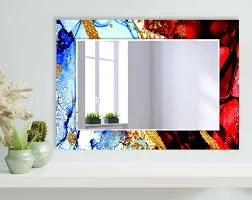

Understanding 3mm Float Glass Cut to Size
When it comes to architectural and decorative applications, glass plays a crucial role in enhancing aesthetics and functionality. Among the various types of glass available on the market, 3mm float glass is widely recognized for its clarity, durability, and versatility. This article delves into what 3mm float glass is, its applications, and the benefits of having it cut to size for specific needs.
What is 3mm Float Glass?
Float glass is a type of glass that is manufactured using the float process, where molten glass is floated on top of molten tin. This method produces a uniform thickness and smooth surface, resulting in glass that is clear and free from distortion. The 3mm thickness indicates the specific thickness of the glass sheet, making it an ideal choice for a variety of applications, including windows, picture frames, and decorative glass features.
Advantages of 3mm Float Glass
1. Clarity and Transparency One of the main advantages of 3mm float glass is its optical clarity. It allows for excellent light transmission while providing a clear view of the outside, making it ideal for windows and display cases.
2. Customization Options Float glass can be cut, shaped, and treated to meet specific requirements. Whether for small projects or large installations, 3mm glass can be easily tailored to size, which is a significant advantage in design and construction.
3. Durability Despite its thin profile, 3mm float glass is strong and resistant to scratching. It offers good thermal insulation and is less prone to breakage compared to thinner glass types, making it suitable for various environmental conditions.
4. Cost-Effective 3mm float glass is generally more affordable than thicker glass options. Its cost-effectiveness makes it a popular choice among homeowners and builders looking to create stylish and functional spaces without breaking the bank.
Applications of 3mm Float Glass Cut to Size

1. Windows and Doors When cut to size, 3mm float glass can be used for windowpanes and door inserts, providing insulation and a sleek look. It is suitable for both residential and commercial properties.
2. Picture Frames For art collectors and photographers, custom-cut 3mm float glass makes an ideal cover for picture frames. Its clarity enhances the artwork while providing protection against dust and damage.
3. Mirrors 3mm float glass can be backed with a reflective coating to create mirrors. Custom sizing allows for unique shapes and dimensions, perfect for bathrooms, dressing areas, and decorative purposes.
4. Glass Shelving Retailers and homeowners alike use cut-to-size 3mm float glass for shelving. Its strength and lightness make it an excellent option for display cases and interior shelving units.
5. Decorative Features Interior designers often leverage 3mm float glass for various decorative features, including table tops, partitions, and wall accents. Custom shapes and sizes can enhance the overall design of a space.
The Cutting Process
Cutting 3mm float glass to size requires specialized tools and knowledge. The process typically involves measuring the desired dimensions, scoring the glass with a glass cutter, and then breaking it along the score line. Modern workshops often utilize computer numerical control (CNC) machines for precision cuts, ensuring each piece meets exact specifications.
When opting for custom glass cutting services, it is essential to communicate your requirements clearly, including the thickness, size, and any finishing details such as polished edges or holes for fittings.
Conclusion
3mm float glass cut to size is a versatile and practical solution for numerous applications across residential and commercial spaces. Its clarity and strength, combined with the ability to customize, make it an asset in design and functionality. Whether for windows, shelving, or decorative elements, 3mm float glass offers an ideal balance of affordability and elegance, making it a preferred choice for many. As the demand for glass solutions continues to grow, understanding its features and benefits remains crucial for making informed decisions in design and construction.